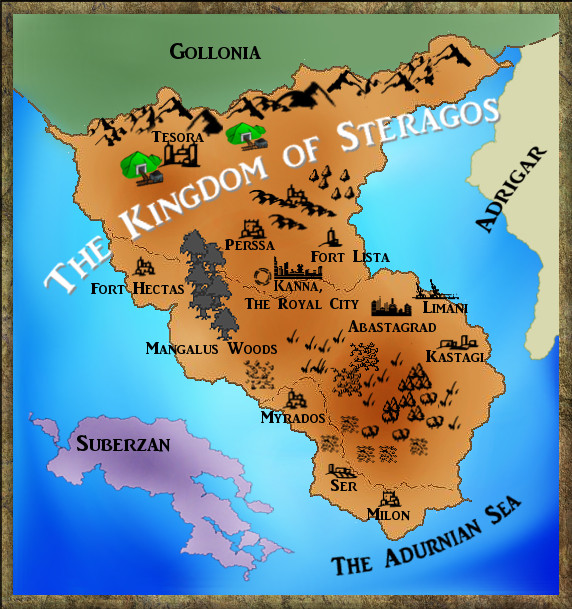Figuring out my audience while writing a young reader’s book.
#2
In my previous blog post, I outlined a writing project which initially started as out as a children’s book, then became a short story for young readers. As I’d already started the book out with simple, child-friendly language, I found that my workload had doubled up: not only did I have to finish the story, but I had to re-write what I’d already written it for my new audience as well. This endeavor was made all the more complex by the fact that the notion of who exactly my audience consists of is a bit fuzzy to me.
As for the current state of progress on the project, well … allow me to let my inner monologue hold forth on that a bit:
AAAAHHH IT STINKS IT STINKS IT STINKS IT STINKS IT STINKS AAAAHHH!!!
Yeah, that just about sums it up – but not accurately, and not fairly either. There was a certain confidence and ease with which I had written the initial story, two rare aspects of my writer’s mind that were very blatantly absent as I sat in the McDonald’s that night, gently coaxing my simple tale into a complex monstrosity. How could rewriting something be so difficult?!
Upon reflection, the reason why is obvious: The story (let’s call it Fighting Princess Story for desperate lack of a better title) was indeed simple; I’d written it not merely for children, but children for whom English was a foreign language. What’s more was that the students I had in mind were my students, so the text, tone, concepts, and plot of the adventure were strongly informed by the familiarity I had with my small audience.
So now I’m trying to write for an unfamiliar audience, and as one of the posters on my debut article mentioned, writing for “young readers” is difficult in that such a group can mean a large number of people at different levels of maturity, even within specific age groups (8-10, 10-12, and so on).
This has resulted in a bit of a creative paradox. On the one hand, as the upper-limit of maturity of the reader is vaguely defined, I feel a bit freer in what I can do, including lengthening the story, adding some complexity to the plot (not too much, of course), and expanding on the opening badminton game (two of the protagonists like badminton). On the other hand, the lower limit of the potential reader’s skills is almost just as ambiguous, and as such leaves me to wonder just how advanced should the vocabulary be, how much detail is too much detail, or if the dialogue/narrative ratio equals out. Or should it?
Now, honestly, having to deal with such questions would be no massive problem if I were to simply think them through before writing. I’m on a bit of a schedule, however, and so have to deal with these issues as I write the thing. And it was then that I discovered one of the reasons why I am so reluctant to fire up the word processor (or screenplay software) and just spit out one opus after another: self-editing. Not the act of going through a finished piece and looking for typos or places where improvements could be made, oh no – this type of self-editing happens just as you’re beating against the keys.
A line of snappy dialogue pops into your head, and you can’t get it down fast enough. However, what emerges onscreen isn’t the Wilde–worthy bon mot you heard in your mind. So, you stop – you stop the whole #*@$ train! – just to rewrite that line. And … okay, so, this time, it’s a little closer to what you wanted, has a little bit of that spice – but then the issue of whether or not your audience will get it starts nagging at you before you’ve even looked it over good. Will they understand the irony? Is “predicament” a word too high over their heads? Will they comprehend what the character said to begin with? Was the line actually witty, or is the reality that you, the writer, cannot communicate wit, irony, or even a coherent sentence in English even if possessed by the spirit of a dead grammar book?
This, I realized, is literally quite tiring. A wealth of creative energy is being used on these pathetic little hiccups that could probably be resolved far more casually in a second or third draft. It’s hard to see that when in the thick of it, of course, at which point the idea of doing a second draft seems ludicrously cruel since you haven’t finished the first.
But nitpicking and over-agonizing ain’t the half of it, oh no. See, when you start dealing with one tiny conundrum after another, those conundrums seem to pile up. Soon, the belief begins to creep in that what you’ve written is not a story so much as it a gigantic collection of inadvisable, self-important screw-ups which serves better as an example of how to fail as a writer than a piece of literary entertainment. This kind of thinking eats into your self-esteem. You feel bad because this thing that you made in your mind is not behaving the way it should. What kind of writer are you if you can’t control your writing? Maybe you should have done what your mother insisted and become a neurosurgeon. Pft. Shyeah, right. You would’ve blown that too.
Then after slinking off your laptop and letting things sit for a while, your level-headedness kicks in (though not enough to tell you to stop being a writer) and reminds you that you haven’t cleared the middle of the story yet. It’s too early to start cutting yourself down. There’s plenty of time for that after the story is finished. But no, seriously – the thing is not that bad.
I get so bogged down in silly little details and self-consciousness that I forget (neglect) to get the thing done. I have to remember that sometimes the best thing to do is just smash through to the end of the story, let it go for a while, and then go back and revise. Trying to be peerlessly brilliant on the first attempt is simply putting myself in a pressure cooker for no good reason. I need to learn to relax and, if humanly possible, enjoy the writing experience.
To this end, I have made it a point not to worry so much about what I should or shouldn’t write – I’ll just write it. The fixes will be simple and readily available after the first draft is completed; there’s no reason to worry about a poor result so early in the development stage. You must first learn to walk before you can run headlong into a telephone pole.
Next time, character development on the fly.







